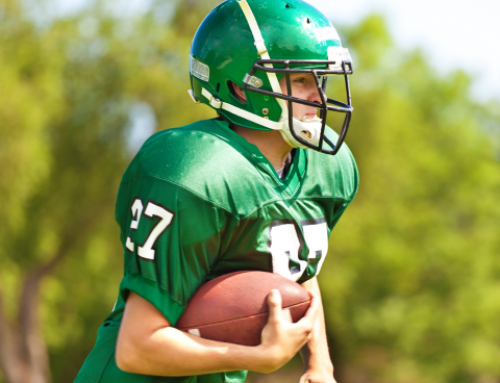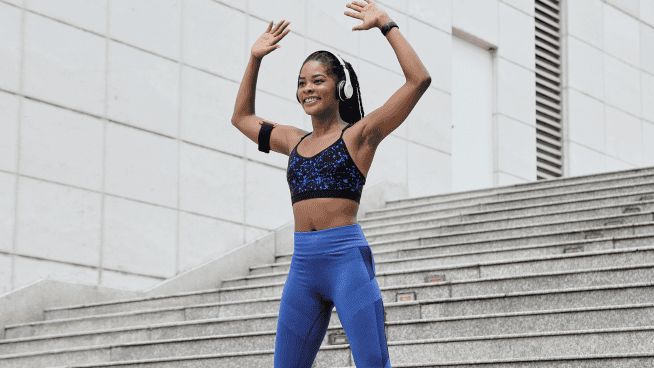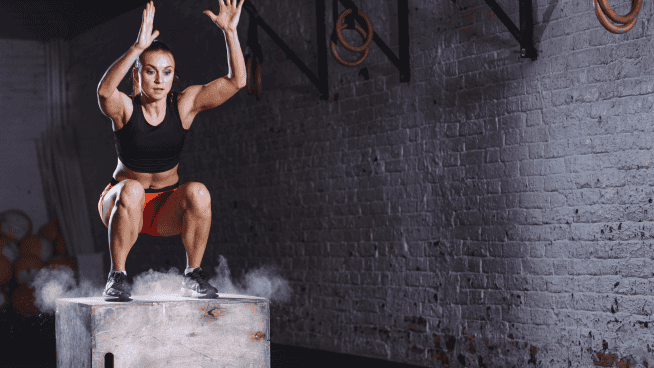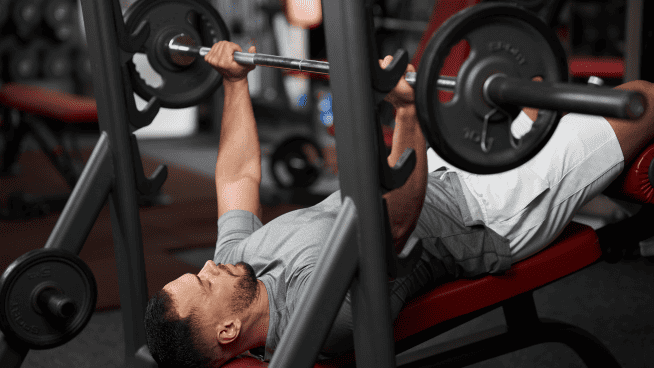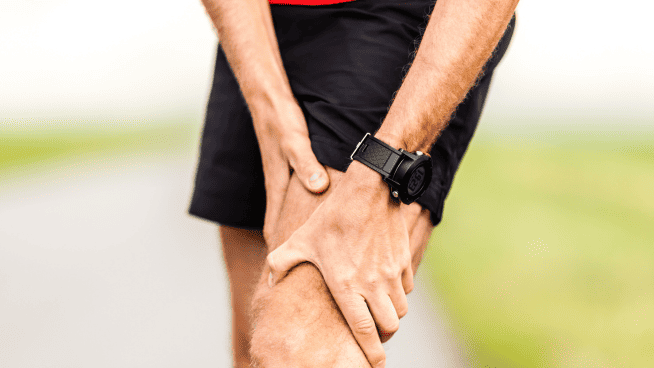These Exercises Can Help Protect Female Soccer Players Against ACL Injuries
ACL injuries are incredibly common among female soccer players.
Many of the sport’s biggest stars, such as Megan Rapinoe and Alex Morgan, have suffered torn ACLs. ACL tears can leave a player sidelined for up to a year or more.
A 2016 article published in the Journal of Orthopaedics states that incidence of ACL injury is 2.8 times greater in female soccer players than it is in male soccer players. One reason for this stark difference is differences in anatomical make-up. Females have wider hips and are far more likely than males to go into knee valgus (caved in knees), which places added stress on the anterior cruciate ligament, or ACL.
However, just because females are more susceptible to ACL injury does not mean we’re powerless against them. Our anatomy is obviously out of our control, but the good news is there are ways we can fight back. The weight room is perhaps our best weapon against ACL injury.
Strength training to reduce risk of ACL injury must be done in a multi-faceted manner, focusing on the main muscles that stabilize the knee and allow it to handle force. Moreover, strength exercises must be done in various planes of motion and target a variety of muscle groups, as soccer is a multi-planar sport with a tremendous amount of movement variety.
With that in mind, here are five exercises that, when used in conjunction, can help you protect your ACL from injury.
1. Eccentric Single-Leg RDL
Eccentric Single-Leg RDLs are one of my favorite exercises to make the ACL more durable. These teach the hamstrings eccentric control, train the ankle to stabilize and help athletes learn how to use their gluteus maximus.
Eccentric control is critical for training muscles to handle force on the pitch, particularly during movements that feature deceleration and change of direction, as this is where most eccentric muscle action occurs. By training eccentric control in the weight room, we also train the muscles not to fatigue as quickly during these actions.
2. Lateral Lunge
If you’re not training lateral movements, you are missing a major piece in the ACL injury prevention puzzle.
The Lateral Lunge gets players out of the sagittal plane and allows them to explore mobility and strength in a plane that is used a lot in soccer. If players are not trained in the frontal plane, they will not know how to control deceleration and change of direction during competition time, which can increase the risk of non-contact injury. Lateral Lunges also specifically target the gluteus medius muscles, which play a critical role in combating valgus collapse and preventing ACL injuries.
3. Lateral Bounding
Lateral bounding takes the Lateral Lunge one step further. It’s an excellent way to not only improve power production, but to also help with balance and landing. The below drill is a nice place to start, because it reinforces proper landing technique when players must focus on loading the posterior chain (hamstrings and gluteals.)
The key is to focus on landing softly with a slight bend at the knee and hip. Once this is mastered, adding load with increased speed or weight will help further strengthen the lateral eccentric control.
4. Step-Up Lunge
While the hips, glutes and hamstrings often lag behind the quadriceps in terms of strength for many female athletes, the quads play an important role in knee stabilization. Therefore, a comprehensive ACL injury reduction program should not ignore them.
Sure, some athletes may have different weaknesses than others, but it is best to attack every muscle group. It is safe to say that a multitude of muscles work together to keep knees healthy, so it is better to strengthen everything.
The Step-Up Lunge improves single-leg strength and balance.
5. Core Anti-Rotation
The core is the foundation that allows players to control their bodies in space. It helps resist force while transferring energy from the lower to the upper body, allowing players to move more efficiently. A strong, stable core will also allow players to better withstand contact and maintain balance throughout their entire kinetic chain.
Here are a few anti-rotation core exercises that I really love:
Additionally, performing some hip activation and glute activation moves before training, practice and competition can go a long way toward reducing your risk of ACL injury. If you are a female soccer player or a coach to female soccer players, I urge you to take action and start making strength training a priority.
ACL injury reduction is something that needs to be prioritized and not taken lightly, but I am hopeful with the introduction of smart strength training and activation exercises, we can see the sky-high rates of injury decrease among the female soccer player population.
Photo Credit: Maddie Meyer/Getty Images
READ MORE:
RECOMMENDED FOR YOU
These Exercises Can Help Protect Female Soccer Players Against ACL Injuries
ACL injuries are incredibly common among female soccer players.
Many of the sport’s biggest stars, such as Megan Rapinoe and Alex Morgan, have suffered torn ACLs. ACL tears can leave a player sidelined for up to a year or more.
A 2016 article published in the Journal of Orthopaedics states that incidence of ACL injury is 2.8 times greater in female soccer players than it is in male soccer players. One reason for this stark difference is differences in anatomical make-up. Females have wider hips and are far more likely than males to go into knee valgus (caved in knees), which places added stress on the anterior cruciate ligament, or ACL.
However, just because females are more susceptible to ACL injury does not mean we’re powerless against them. Our anatomy is obviously out of our control, but the good news is there are ways we can fight back. The weight room is perhaps our best weapon against ACL injury.
Strength training to reduce risk of ACL injury must be done in a multi-faceted manner, focusing on the main muscles that stabilize the knee and allow it to handle force. Moreover, strength exercises must be done in various planes of motion and target a variety of muscle groups, as soccer is a multi-planar sport with a tremendous amount of movement variety.
With that in mind, here are five exercises that, when used in conjunction, can help you protect your ACL from injury.
1. Eccentric Single-Leg RDL
Eccentric Single-Leg RDLs are one of my favorite exercises to make the ACL more durable. These teach the hamstrings eccentric control, train the ankle to stabilize and help athletes learn how to use their gluteus maximus.
Eccentric control is critical for training muscles to handle force on the pitch, particularly during movements that feature deceleration and change of direction, as this is where most eccentric muscle action occurs. By training eccentric control in the weight room, we also train the muscles not to fatigue as quickly during these actions.
2. Lateral Lunge
If you’re not training lateral movements, you are missing a major piece in the ACL injury prevention puzzle.
The Lateral Lunge gets players out of the sagittal plane and allows them to explore mobility and strength in a plane that is used a lot in soccer. If players are not trained in the frontal plane, they will not know how to control deceleration and change of direction during competition time, which can increase the risk of non-contact injury. Lateral Lunges also specifically target the gluteus medius muscles, which play a critical role in combating valgus collapse and preventing ACL injuries.
3. Lateral Bounding
Lateral bounding takes the Lateral Lunge one step further. It’s an excellent way to not only improve power production, but to also help with balance and landing. The below drill is a nice place to start, because it reinforces proper landing technique when players must focus on loading the posterior chain (hamstrings and gluteals.)
The key is to focus on landing softly with a slight bend at the knee and hip. Once this is mastered, adding load with increased speed or weight will help further strengthen the lateral eccentric control.
4. Step-Up Lunge
While the hips, glutes and hamstrings often lag behind the quadriceps in terms of strength for many female athletes, the quads play an important role in knee stabilization. Therefore, a comprehensive ACL injury reduction program should not ignore them.
Sure, some athletes may have different weaknesses than others, but it is best to attack every muscle group. It is safe to say that a multitude of muscles work together to keep knees healthy, so it is better to strengthen everything.
The Step-Up Lunge improves single-leg strength and balance.
5. Core Anti-Rotation
The core is the foundation that allows players to control their bodies in space. It helps resist force while transferring energy from the lower to the upper body, allowing players to move more efficiently. A strong, stable core will also allow players to better withstand contact and maintain balance throughout their entire kinetic chain.
Here are a few anti-rotation core exercises that I really love:
Additionally, performing some hip activation and glute activation moves before training, practice and competition can go a long way toward reducing your risk of ACL injury. If you are a female soccer player or a coach to female soccer players, I urge you to take action and start making strength training a priority.
ACL injury reduction is something that needs to be prioritized and not taken lightly, but I am hopeful with the introduction of smart strength training and activation exercises, we can see the sky-high rates of injury decrease among the female soccer player population.
Photo Credit: Maddie Meyer/Getty Images
READ MORE:




